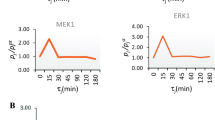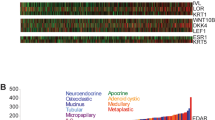Abstract
Characterisation and quantitation of epidermal growth factor receptors (EGFR) have been carried out on eight human squamous carcinoma cell lines and the results compared with those from simian virus transformed keratinocytes and normal keratinocytes grown under similar conditions. All cells tested possess both high and low affinity receptors with dissociation constants ranging from 2.4 X 10(-10) M to 5.4 X 10(-9) M. When epidermal growth factor (EGF) binds to its receptor it is internalised and degraded and the receptor is down regulated. Malignant cells and virally transformed cells possess 5-50 times more EGF receptors than normal keratinocytes and one cell line LICR-LON-HN-5 possesses up to 1.4 X 10(7) receptors per cell, which is the highest number yet reported for a cell line. These results are discussed in the context of recent data that suggest that the increased expression of EGF receptors in epidermoid malignancies may be an important component of the malignant phenotype in these tumours.
This is a preview of subscription content, access via your institution
Access options
Subscribe to this journal
Receive 24 print issues and online access
$259.00 per year
only $10.79 per issue
Buy this article
- Purchase on Springer Link
- Instant access to full article PDF
Prices may be subject to local taxes which are calculated during checkout
Similar content being viewed by others
Rights and permissions
About this article
Cite this article
Cowley, G., Smith, J. & Gusterson, B. Increased EGF receptors on human squamous carcinoma cell lines. Br J Cancer 53, 223–229 (1986). https://doi.org/10.1038/bjc.1986.39
Issue Date:
DOI: https://doi.org/10.1038/bjc.1986.39
This article is cited by
-
Mutational spectrum of tobacco associated oral squamous carcinoma and its therapeutic significance
World Journal of Surgical Oncology (2019)
-
Moderne immuntherapeutische Ansätze für die Behandlung von Lungen- und Kopf-Hals-Tumoren
Der Onkologe (2005)
-
Chromosome 7 Aneusomy. A Marker for Metastatic Melanoma?
Neoplasia (2001)
-
Epidermal growth factor receptor dimerization monitored in live cells
Nature Biotechnology (2000)
-
Cell, tissue and organ culture as in vitro models to study the biology of squamous cell carcinomas of the head and neck
Cancer and Metastasis Review (1996)



